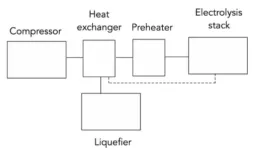While binge drinking has generally declined for the past 10 years among younger adults, adults aged 35 to 50 in 2022 reported the highest prevalence of binge drinking ever recorded for this age group, which also represents a significant past-year, five-year, and 10-year increase.
“Substance use is not limited to teens and young adults, and these data help us understand how people use drugs across the lifespan,” said NIDA director, Nora Volkow, M.D. “Understanding these trends is a first step, and it is crucial that research continues to illuminate how substance use and related health impacts may change over time. We want to ensure that people from the earliest to the latest stages in adulthood are equipped with up-to-date knowledge to help inform decisions related to substance use.”
Since 1975, the MTF study has annually surveyed substance use behaviors and attitudes among nationally representative samples of eighth, 10th, and 12th graders. The MTF longitudinal panel study conducts follow-up surveys on a subset of the participants after the 12th grade to track their drug use through adulthood. After high school, the participants are followed every other year through age 30, then every five years afterward, with the oldest participants now in their 60s.
Data for the 2022 survey of adults were collected via online and paper surveys from April 2022 through October 2022. Researchers divided the data into two age groups to conduct trend analyses: 19 to 30 years old and 35 to 50 years old. Key findings include:
Marijuana Use: For adults aged 19 to 30, the percentages of those reporting past-year marijuana use and daily marijuana use reached their highest levels ever reported by the study. Past-year use was reported by approximately 44% of those surveyed in 2022, an increase from five years ago (35% in 2017) and 10 years ago (28% in 2012). Daily marijuana use also reached its highest level reported in 2022 (11%), which was greater than five years (8% in 2017) and 10 years ago (6% in 2012).
Reports of past-year marijuana use among adults aged 35 to 50 also reached an all-time high in 2022 (28%). This had increased from the previous year (25% in 2021) and five years ago (17% in 2017), and more than doubled compared to 10 years ago (13% in 2012).
Vaping: Past-year marijuana vaping was reported by 21% of adults 19 to 30 years old in 2022, the highest levels reported since the measure was first added in 2017 (12%), as well as a notable increase from the past year (19% in 2021) and five years ago (12% in 2017). Past-year nicotine vaping among this younger adult group also reached a historic high in 2022 (24%), nearly double the rate reported five years ago in 2017 (14%), when the measure was first added.
Among adults aged 35 to 50, reports of past-year marijuana vaping remained at similar levels (9% in 2022) since 2019, when these measures were first available in this age group. Prevalence of past-year nicotine vaping has also remained steady in this age group since it has been reported, with 7% reporting in 2022.
Hallucinogen Use: Among adults aged 19 to 30, 8% reported past-year use of hallucinogens, significantly higher than five years ago (5% in 2017) and 10 years ago (3% in 2012). Types of hallucinogens reported by participants included LSD, MDMA, mescaline, peyote, shrooms or psilocybin, and PCP. Most of past-year use in 2022 reported by adults in this age group involved hallucinogens other than LSD (7% in 2022).
Past-year hallucinogen use reached historically high prevalence among adults 35 to 50 years old, reported by 4% in 2022. The prevalence reported in 2022 was also a substantial increase compared to the year before (2% in 2021) and five and 10 years ago (no greater than 1% in both 2017 and 2012).
Alcohol Use: Over the past decade, rates of alcohol use – including past-month use, daily drinking, and binge drinking – have shown an overall downward trend for adults 19 to 30 years old. Past-year drinking slightly increased for this age group in 2022 (84%) compared to five years ago (82% in 2017).
Alcohol use among adults aged 35 to 50 has shown a gradual increase over the past 10 years, with past-year drinking increasing from 83% in 2012 to 85% in 2022. Binge drinking in this older group reached its highest levels (29% in 2022), and increased over the past year, five years, and 10 years (26% in 2021; 25% in 2017; 23% in 2012).
The study also showed that past-year use of cigarettes, sedatives, and non-medical use of opioid medications (“narcotics other than heroin”) showed a 10-year decline for both adult age groups. Reports of past-year amphetamine use continued a 10-year decrease among 19- to 30-year-olds and a 10-year increase among 35 to 50 year-olds. Drug use trends among college and non-college young adults, demographic subgroups, and other additional data are also included in the report.
“The value of surveys such as MTF is to show us how drug use trends evolve over decades and across development – from adolescence through adulthood,” said Megan Patrick, Ph.D., a research professor at the University of Michigan and principal investigator of the MTF panel study. “Behaviors and public perception of drug use can shift rapidly, based on drug availability and other factors. It’s important to track this so that public health professionals and communities can be prepared to respond.”
Results from the related 2022 MTF study of substance use behaviors and related attitudes among teens in the United States was released in December 2022, and 2023 results are upcoming in December 2023.
---------------------------------------------
For more information on substance and mental health treatment programs in your area, call the free and confidential National Helpline 1-800-662-HELP (4357) or visit www.FindTreatment.gov.
###
About the National Institute on Drug Abuse (NIDA): NIDA is a component of the National Institutes of Health, U.S. Department of Health and Human Services. NIDA supports most of the world’s research on the health aspects of drug use and addiction. The Institute carries out a large variety of programs to inform policy, improve practice, and advance addiction science. For more information about NIDA and its programs, visit www.nida.nih.gov.
About the National Institutes of Health (NIH): NIH, the nation’s medical research agency, includes 27 Institutes and Centers and is a component of the U.S. Department of Health and Human Services. NIH is the primary federal agency conducting and supporting basic, clinical, and translational medical research, and is investigating the causes, treatments, and cures for both common and rare diseases. For more information about NIH and its programs, visit www.nih.gov.
About substance use disorders: Substance use disorders are chronic, treatable conditions from which people can recover. In 2021, over 46 million people in the United States had at least one substance use disorder. Substance use disorders are defined in part by continued use of substances despite negative consequences. They are also relapsing conditions, in which periods of abstinence (not using substances) can be followed by a return to use. Stigma can make individuals with substance use disorders less likely to seek treatment. Using preferred language can help accurately report on substance use and addiction. View NIDA’s online guide.
NIH…Turning Discovery Into Health®
END


